Do It Again Dogs and Cats Clip Art
Are you a dog person, or a cat person? The question is ofttimes treated as dichotomous: if yous appreciate the solidity of a steadfast pooch, y'all can't also relish the coquettish companionship of a kitty. Contempo studies propose humankind could have been divided by their pet-preferences since the stone age. In evolutionary terms, however, the question is far from black and white. Cats and dogs vest together, related to one another by a mutual ancestor. They share this ancestry with a whole suite of other animals, large and modest. One may as well enquire: are you a badger person, or a hyaena-person? Practice you adopt meerkats, or weasels?
Our beloved pets vest to the guild Carnivora. This group includes bears, hyaenas, mongooses, civets, skunks, badgers and more, also as marine members, the seals, walruses, and bounding main-lions. The name of the group is a little misleading: not all meat-chomping mammals are role of Carnivora, and non all members of Carnivora feast on flesh.
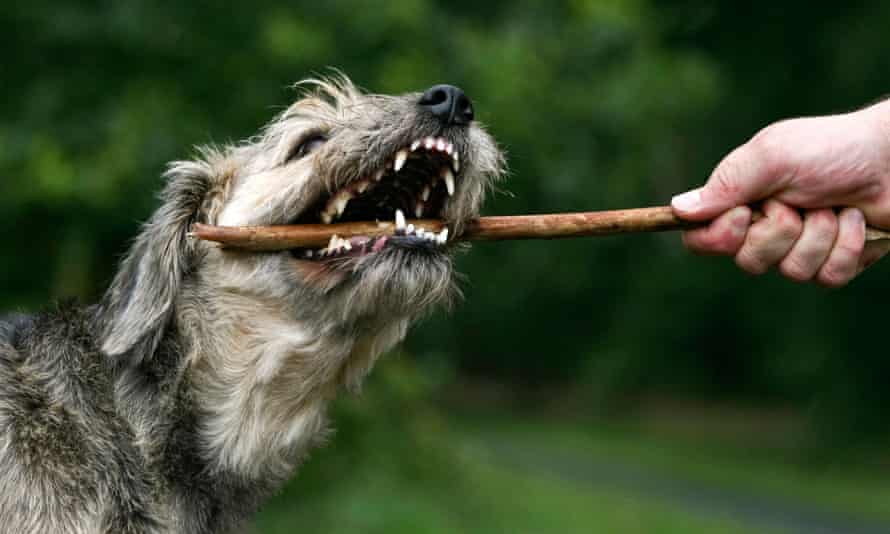
Carnivorans (animals belonging to the order Carnivora) share various features, simply the key one is in their teeth. They all have blade-like carnassial teeth – their fourth upper premolar and get-go lower tooth – which bite together to shear through food. This design is specially good for snipping flesh, and many carnivorans live a predatory lifestyle. Others are more omnivorous, such as the bears, which tackle huge ranges of food, simply also bintourongs and cerise pandas, which thrive on a mostly establish-based nutrition. The and so-chosen behemothic 'panda'* has pushed the boat right out: becoming a fully-fledged, bamboo-specialist vegetarian (although information technology has been known to nom the occasional fish, egg or insect).
So what ancestral family unit photograph practise all of these seemingly disparate animals have mounted on the wall at dwelling? The ancestors of Carnivora are from a group of animals called miacids, once found across Eurasia and Due north America. They were small-scale, long-bodied creatures, a picayune like a pine marten, and at home in the trees. The verbal relationships among these miacids remains unclear, but we know they appeared only a few one thousand thousand years after the extinction of the dinosaurs, and persisted for over 25 one thousand thousand years. From among their slinky ranks, the earliest identifiable carnivorans emerged.
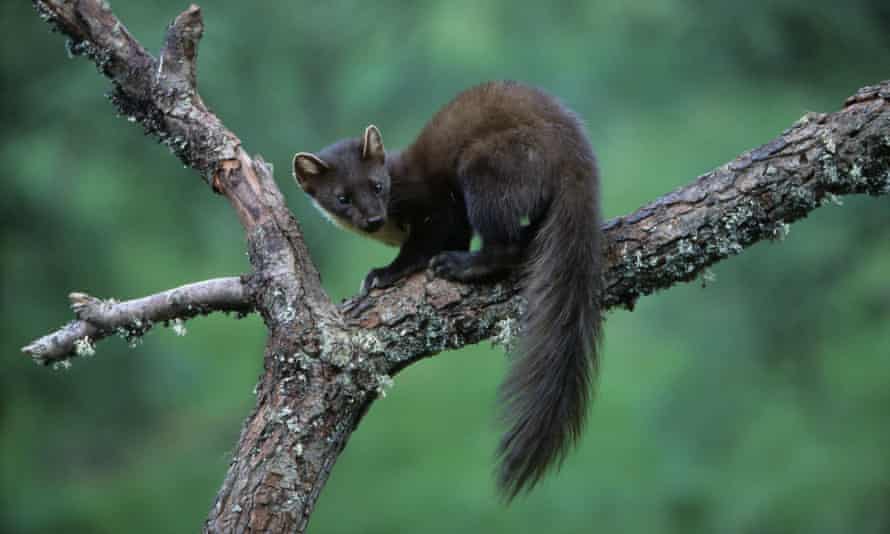
Carnivora oasis't ever been the top-dogs when it comes to killing. Back in those heady days of mammal divergence later the asteroid had wiped the largest reptiles from the face of the earth, ii other dominant mammal groups emerged with specialised shearing teeth to prey on animals.
The creodontans included the largest land mammal predators of all time. Their carnassial teeth comprised only molars (not premolars and molars, like the carnivorans). This suggests that they converged on the specialisation to chase and consume mankind separately from Carnivora, and they did it across Eurasia, Africa and Due north America. The last known creodontan, Dissopsalis, only died out 8 million years ago, by which signal carnivorans had taken over the predatory world.
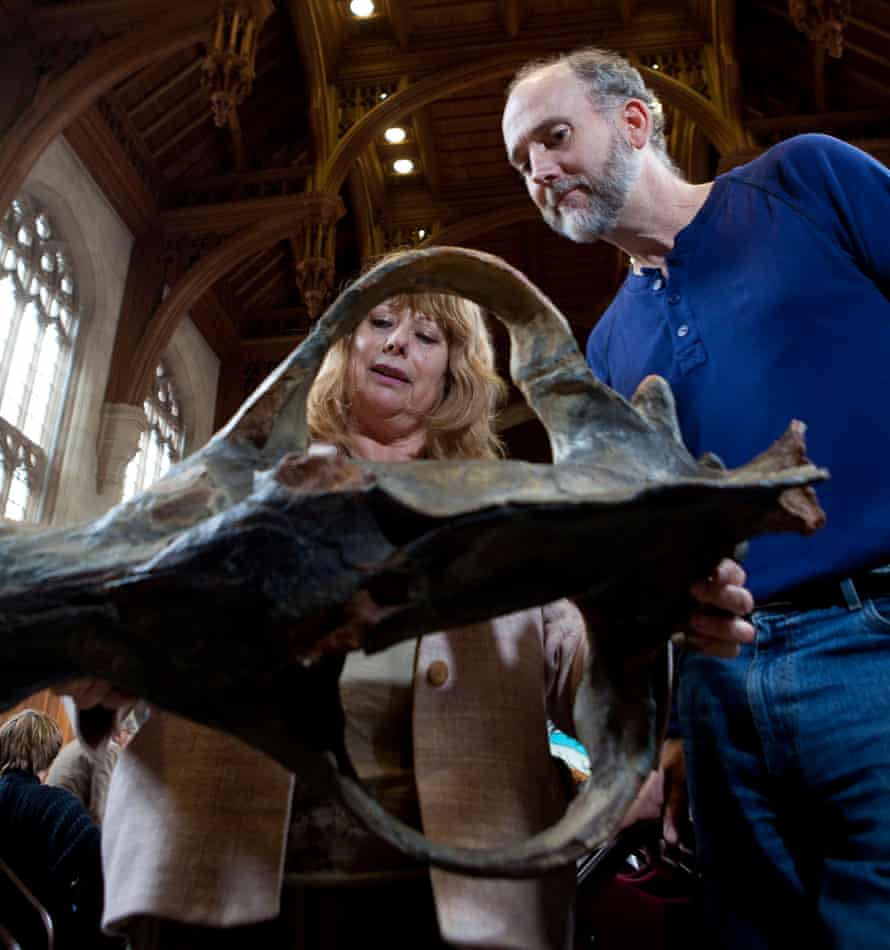
Creodontans were not the only ones prowling the Palaeogene. An even stranger grouping of meat-eaters, hailing from Asia, spread across the northern hemisphere: the mesonychids. They didn't have carnassial teeth at all, just had their own unique shearing and crushing molars to process meat. While the earliest species walked on apartment feet, some of the after ones walked on their toes similar cats and dogs - except that they had hooves on each toe. Sharing many tooth and skull characteristics with whales and dolphins, scientists thought mesonychids may exist these marine-mammals' ancestors. More contempo assay suggests they are sister groups, sharing a common antecedent forth with hippos.
Mesonychids and creodontans were the height-predators in their time, merely both were replaced by Carnivora, one of the most successful animal groups on world. Information technology'south unclear exactly why the carnivorans did so well at their cousins' expense, only it has been suggested that a suite of unique adaptations – including larger brains, more efficient locomotion, and more than versatile teeth - gave them the ecological advantage, allowing them to supervene upon their competitors.
At that place is a grain of truth in the cat versus canis familiaris question. Although they share a common ancestor, the Carnivora are split into 2 quite well-defined groups that are broadly canis familiaris-like, the caniformia, and broadly cat-like, the feliformia. This division has deep roots, effectually 43 1000000 years.
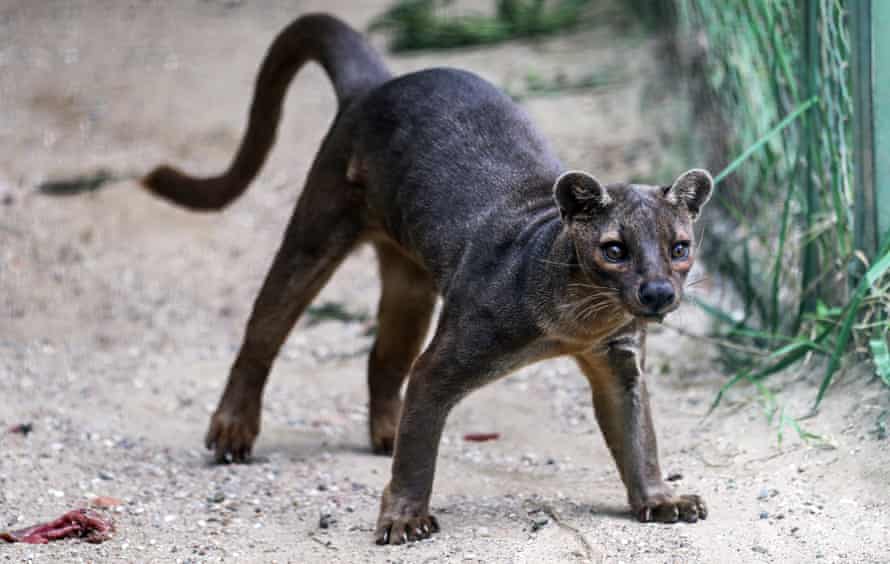
The feliforms tend to be more specialised meat-eaters, have shorter faces and retractable claws. Many of them are ambush, pounce-predators, rather than runners (the cheetah is a notable exception). They include the carnivorans of Madagascar - such as the fossa - meerkats, mongooses, civets and genets (although some research suggests these may have split off from other carnivorans before the main feliformia/caniformia suspension up), as well equally the larger true cats, and the hyaenas. Even a non-specialist can identify most of these animals as sharing a kitty-similar demeanour. Now y'all know, information technology's more than skin deep.
As y'all would expect, the caniformia includes the dogs, wolves and jackals, all of which split from their dog-like relatives early on. The residual of caniformia have a strikingly diverse contour: the bears are in in that location, another early dissever from the rest of the group. The marine carnivorans have really gone to town when it comes to physical specialisation, with their short flippered-limbs and rolls of fat. Only the former slang name for seals, 'body of water-dogs', suggests that even before the science of anatomy confirmed it, humankind could run across a family resemblance. Mayhap less obvious, the skunks, weasels, badgers, otters, racoons and coatis are also part of this pooch-tastic branch of Carnivora.

So what of the loyal hound and humble puss? Contempo inquiry has been exploring the origins of our domesticated friends from their wild forebears. Dogs have received a lot of attending, tracing their origins to an antecedent shared with modern grey wolves. The first domestication (or domestications, it may accept happened twice) of wolves occurred somewhere in Eurasia – peradventure fifty-fifty Europe - although there is even so some disagreement. It took place perhaps past human design, or maybe by accident. The timing has also proven controversial, with a recent study in Nature Communications suggesting it may have occurred as long as 41,000 years ago.
It has even been suggested in another paper out this calendar month, that beginning domesticated wolves suffered from a canine version of the developmental disorder William'due south syndrome. This is acquired past variations in the chromosome which, in humans, results in extremely friendly, trusting characteristics (hypersociability) and what are described as 'pixie-like' facial features. The theory is that wolves with such a disorder may have readily interacted with humans due to their natural inclination to be man'south best friend. More research is needed to explore this possibility, but one this is sure: nosotros've been breeding dogs for friendliness ever since.
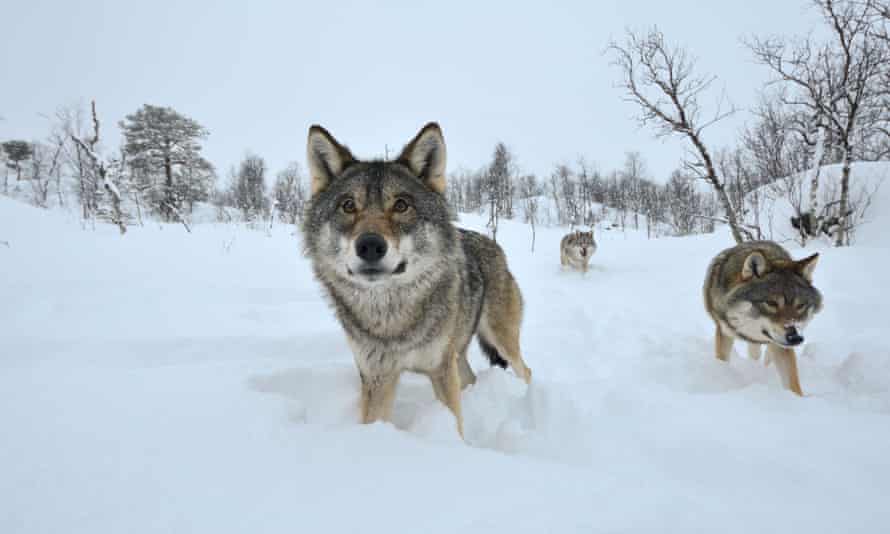
Kitties haven't been studied every bit extensively, merely it's long been obvious their domestication took place later, and was less intense. Recently, an international team led by researchers at KU-Leuven University in Kingdom of belgium, carried out Dna analyses on cats from across Europe, Asia and Africa, including modern cat samples, and aboriginal Dna from archaeological specimens. Their evidence suggests at that place have been crazy true cat ladies since the Neolithic, with waves of cat appreciation starting in the near East and spreading across the old world during the Egyptian dynasties, via trade routes. Only after the Middle Ages did nosotros begin breeding for more than frivolous traits like coat colours, merely nosotros've long appreciated the usefulness of a defended mouser.
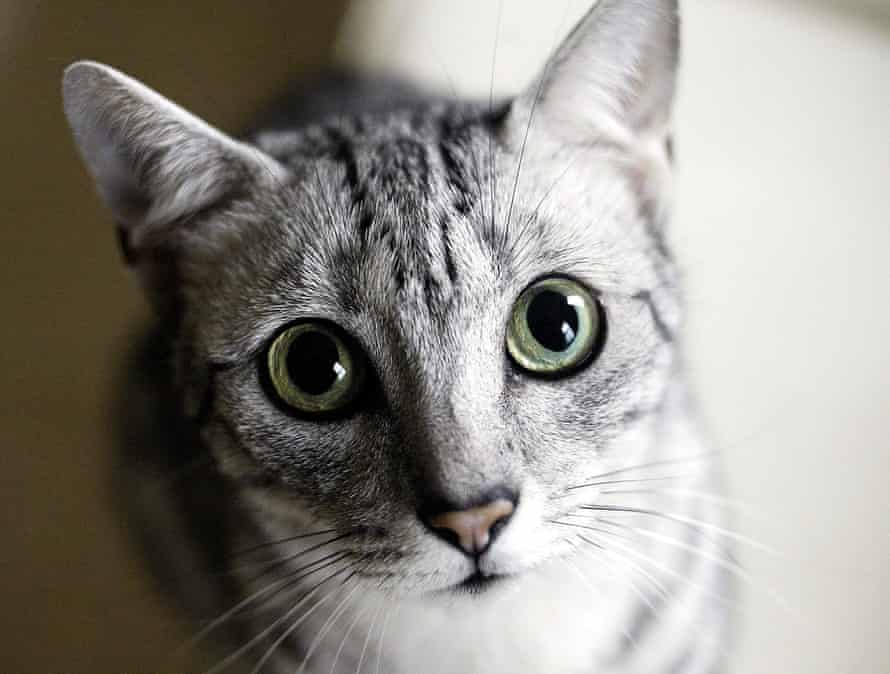
Then, shall we pit the whole of domestic dog-like Carnivora against the cat-like ones? Maybe your preference for pooches extends to their cousins, and you lot find yourself naturally drawn to skunks over mongooses? I'll exit it to yous to ponder your loyalties and pose your ain who-would-win-in-a fight-between questions. Simply if y'all are a pet fence-sitter similar me, you'll know that there is much to appreciate in both branches of Carnivora. The huge diversity of cat and dog relatives pay testament to the successful evolutionary 'pattern' shared by these ii most popular pets.
* So-chosen, because the giant 'panda' and red panda are non direct related. They belong to different branches of Carnivora; the behemothic panda is actually a bear (Ursidae), whereas the red panda is the only fellow member of its own special co-operative, chosen Ailuridae. The red panda was first revealed to the western globe in the 1820s, and well-nigh l years afterwards the giant 'panda' was given its western-name and mistakenly idea to be related to it. And then I enquire you: are you a red-panda-person, or a behemothic-'panda'-person?
References
Flynn JJ, Finarelli JA, Zehr S, Hsu J, Nedbal MA. 2005. Molecular Phylogeny of the Carnivora (Mammalia): Assessing the Impact of Increased Sampling on Resolving Enigmatic Relationships. Periodical of Systematic Biology 54:317-337.
Ottoni C, Neer WV, De Cupere B, Daligault J, Guimaraes S, Peters J, Spassov N, Prendergast ME, Boivin North, Morales-Muñiz A, Bălăşescu A, Becker C, Benecke N, Boroneant A, Buitenhuis H, Chahoud J, Crowther A, Llorente L, Manaseryan North, Monchot H, Onar V, Osypińska M, Putelat O, Quintana Morales EM, Studer J, Wierer U, Decorte R, Grange T, Geigl E-One thousand. 2017. The palaeogenetics of true cat dispersal in the ancient world. Nature Ecology & Development ane:0139.
vonHoldt BM, Shuldiner Due east, Janowitz Koch I, Kartzinel RY, Hogan A, Brubaker L, Wanser South, Stahler D, Wynne CDL, Ostrander EA, Sinsheimer JS, Udell MAR. 2017. Structural variants in genes associated with human Williams-Beuren syndrome underlie stereotypical hypersociability in domestic domestic dog. Scientific discipline Advances three:E1700398.
Source: https://www.theguardian.com/science/2017/jul/26/cats-vs-dogs-in-terms-of-evolution-are-we-barking-up-the-wrong-tree